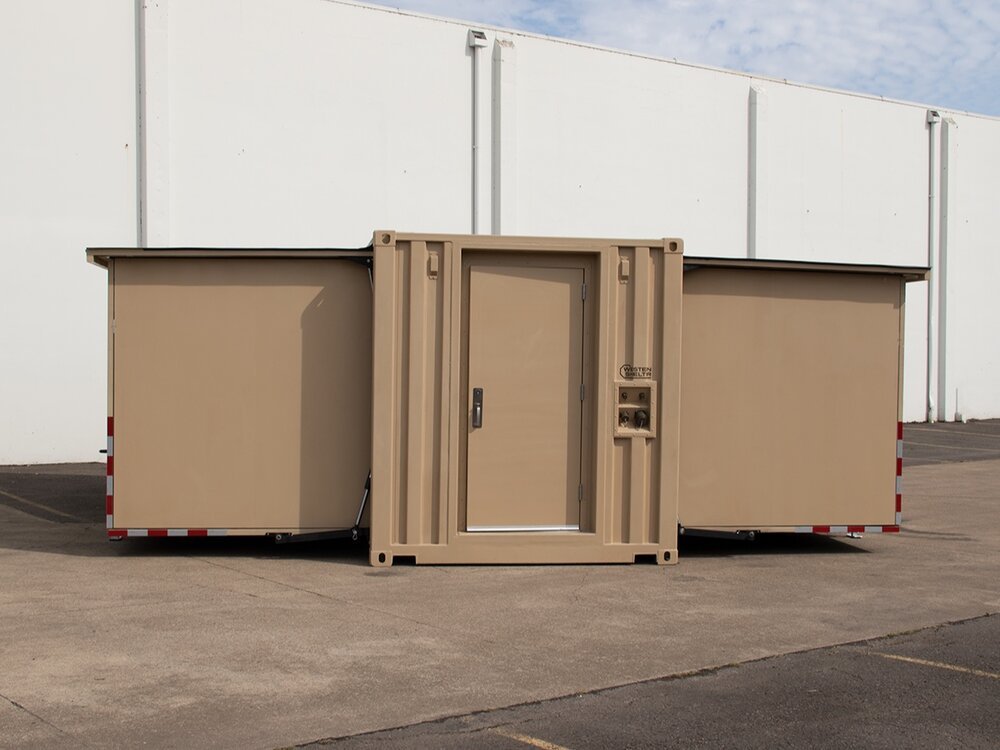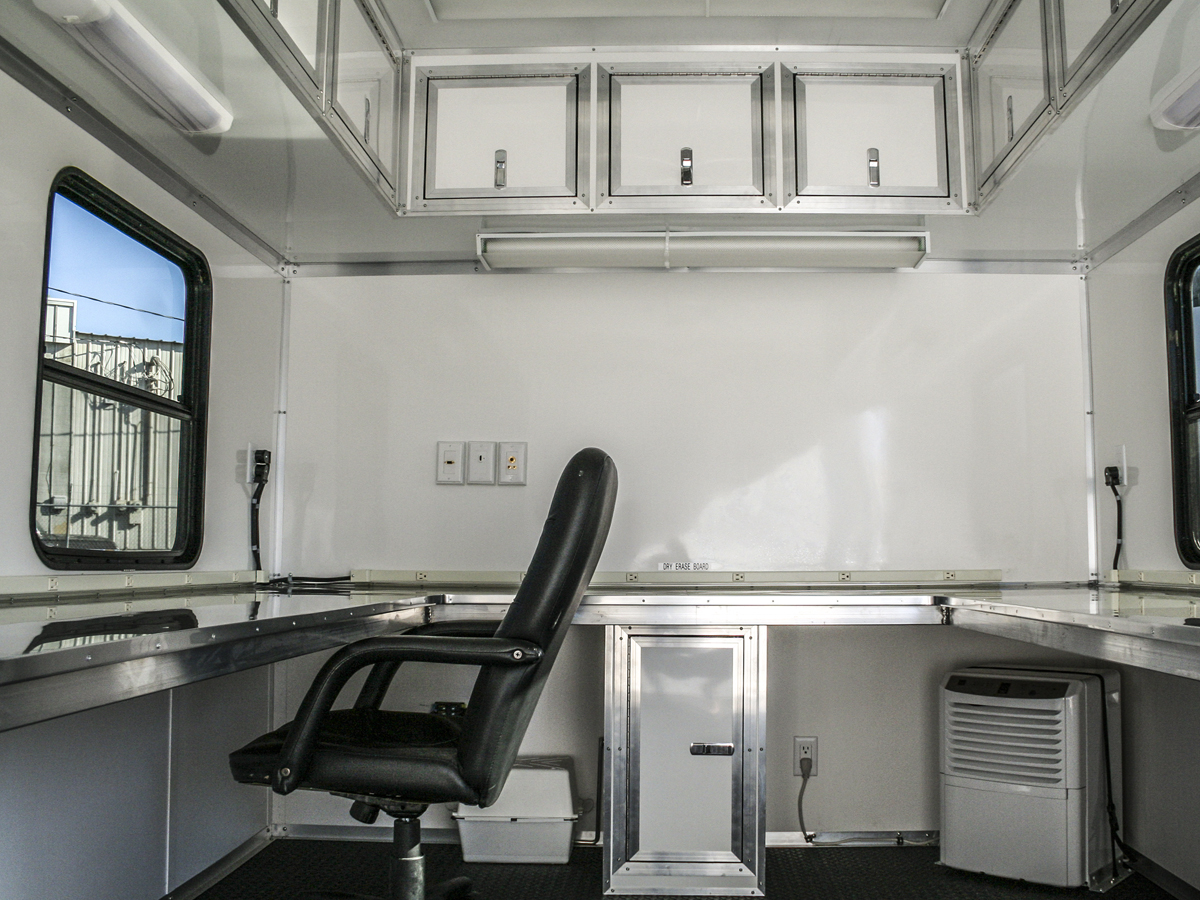In the world of emergency response and disaster management, timely and effective communication can make the difference between life and death. One of the cornerstones of modern emergency response is the mobile command center, a vital asset enabling first responders to coordinate efforts, access critical information, and stay connected in the midst of chaos. In this blog post, we will delve into the world of mobile command centers, focusing on their role in expeditionary shelters. Using Western Shelter as a primary case study, we will explore how advanced technology revolutionizes the way first responders stay connected and informed during critical situations.
The Significance of Connectivity in Emergency Response
Connectivity is the backbone of effective emergency response. When disaster strikes, first responders rely on real-time communication to coordinate efforts, make informed decisions, and save lives. Seamless communication is a necessity, and mobile command centers are at the forefront of ensuring this connectivity.
Consider a scenario where a natural disaster has struck, and multiple agencies respond simultaneously. Without reliable communication, chaos can ensue, leading to inefficiencies, delays, and potentially disastrous consequences. Mobile command centers equipped with cutting-edge technology play a pivotal role in preventing such situations.
Key Technologies for Mobile Command Centers
At the heart of every mobile command center lies a suite of advanced technologies designed to keep first responders connected and informed. Western Shelter understands the critical role of technology in emergency response and has integrated state-of-the-art systems into its mobile command center designs.
Satellite Communication Systems: Mobile command centers can come with satellite communication systems that ensure connectivity even in remote or disaster-stricken areas. These systems provide a lifeline to first responders, enabling them to communicate globally and access critical data regardless of traditional infrastructure availability.
High-Speed Data Networks: The ability to transmit and receive data quickly is paramount in emergency response. Mobile command centers outfitted with high-speed data networks allow first responders to access maps, images, and videos in real time. This capability is invaluable for situational awareness and decision-making.
Radio Systems: Reliable two-way radio communication is a cornerstone of emergency response. Incorporated advanced radio systems enable seamless communication among response teams, ensuring that vital information relays accurately and without delay.
GIS and Mapping Tools: Geographic Information Systems (GIS) and mapping tools provide first responders with valuable geographic data and real-time mapping capabilities. This information aids in resource allocation, navigation, and incident management.
Real-time Data and Information Sharing
In the midst of an emergency, access to real-time data and information can be a game-changer. Western Shelter's mobile command centers come with systems that facilitate data sharing among response teams, agencies, and command personnel. This capability allows for a more coordinated and efficient response.
Imagine a scenario where firefighters are battling a rapidly spreading wildfire. Western Shelter's mobile command centers can provide up-to-the-minute weather data, satellite imagery, and fire behavior predictions. This information empowers responders to make informed decisions about resource deployment and evacuation orders, ultimately saving lives and property.
Communication Redundancy and Reliability
In the unpredictable and often harsh environments of disaster response, communication systems must be robust and reliable. Western Shelter understands the need for redundancy in communication systems and has engineered its mobile command centers accordingly. These mobile command centers are equipped with redundant communication paths, ensuring that if one system fails, there is always a backup.
Trailers, Mobile Ruggedized Expandable Trailer Systems (MRETS), Mobile Expandable Container System (MECS), and the Expandable Container System (ECS-90) all excel as mobile command centers for a variety of reasons. These systems represent the pinnacle of versatility in emergency response:
Trailers are highly mobile and can quickly transport to disaster sites, providing a flexible workspace for incident commanders. These are customized to include advanced communication systems, workstations, and equipment storage, making them adaptable to the unique needs of different agencies and scenarios.
MRETS combines integrated communication and technology systems with rapid deployment capabilities. Its modular design allows for customization, ensuring it can meet the specific needs of different response scenarios, from natural disasters to military operations. Its mobility ensures accessibility to disaster-stricken areas.
MECS is perfect for state-of-the-art communication and technology systems, providing first responders access to critical data and connectivity. Its climate control systems maintain a comfortable working environment, and its versatile interior layout maximizes workspace efficiency. MECS shelters withstand extreme environmental conditions, ensuring reliability in the field.
ECS-90 is renowned for its robust construction, capable of withstanding harsh conditions such as high winds and heavy snow loads. Its rapid deployment capabilities ensure a swift setup, saving critical time during emergencies. ECS-90 shelters offer a flexible interior layout, accommodating various configurations of workstations, communication equipment, and support systems.
Customization and Integration
One of the strengths of Western Shelter's mobile command centers is their versatility and adaptability. These units meet the unique needs of different agencies and scenarios through customization. Whether it's equipping the command center with specific radio frequencies, integrating specialized software, or configuring layout and seating arrangements, Western Shelter ensures that each mobile command center is tailor-made for the mission.
Customization and integration are not just about technology; they extend to the physical aspects of the command center. Western Shelter's expeditionary shelters accommodate various communication equipment, workstations, and briefing areas. This flexibility ensures that first responders have a comfortable and functional workspace, regardless of the demands of the situation.
Training and Support
While cutting-edge technology is crucial, its effectiveness depends on the competence of the operators. Western Shelter recognizes the importance of proper training and support for first responders using their mobile command centers.
Training programs ensure that responders are proficient in using the technology. This includes technical training and guidance on best practices for effective communication and coordination during emergencies.
Moreover, Western Shelter provides ongoing support and maintenance services to keep the technology running smoothly. In the field of emergency response, downtime is not an option, and Western Shelter's commitment to reliability extends beyond the initial deployment.
Future Trends in Mobile Command Center Technology
As technology continues to evolve, so do the capabilities of mobile command centers. Some emerging trends in the field include:
AI Integration: Artificial intelligence integration into command center systems will come with benefits to analyze data, predict trends, and provide proactive recommendations.
5G Connectivity: The rollout of 5G networks will significantly enhance data transfer speeds, enabling even more robust communication and data-sharing capabilities.
IoT Sensors: The Internet of Things (IoT) gathers data from various sensors and devices in the field, providing a comprehensive view of the situation.
Augmented Reality (AR) and Virtual Reality (VR): AR and VR technology exploration in training, incident visualization, and remote support have begun.
In the fast-paced and high-stakes world of emergency response, mobile command center technology is the backbone that keeps first responders connected and informed. Western Shelter's expeditionary shelters, equipped with cutting-edge communication and data-sharing systems, exemplify the transformative power of technology in emergency management.
From satellite communication to GIS tools, from real-time data sharing to redundancy and reliability, Western Shelter's mobile command centers are a testament to the dedication to innovation and excellence in the field of emergency response.
Contact Us
At Western Shelter, we are committed to providing high-quality, customizable solutions. Our experienced team is ready to work with you to identify the best shelters and accessories for your needs. Contact us today to learn more about how Western Shelter can support your mission and sign up for our newsletter to stay up to date on Western Shelter news.















